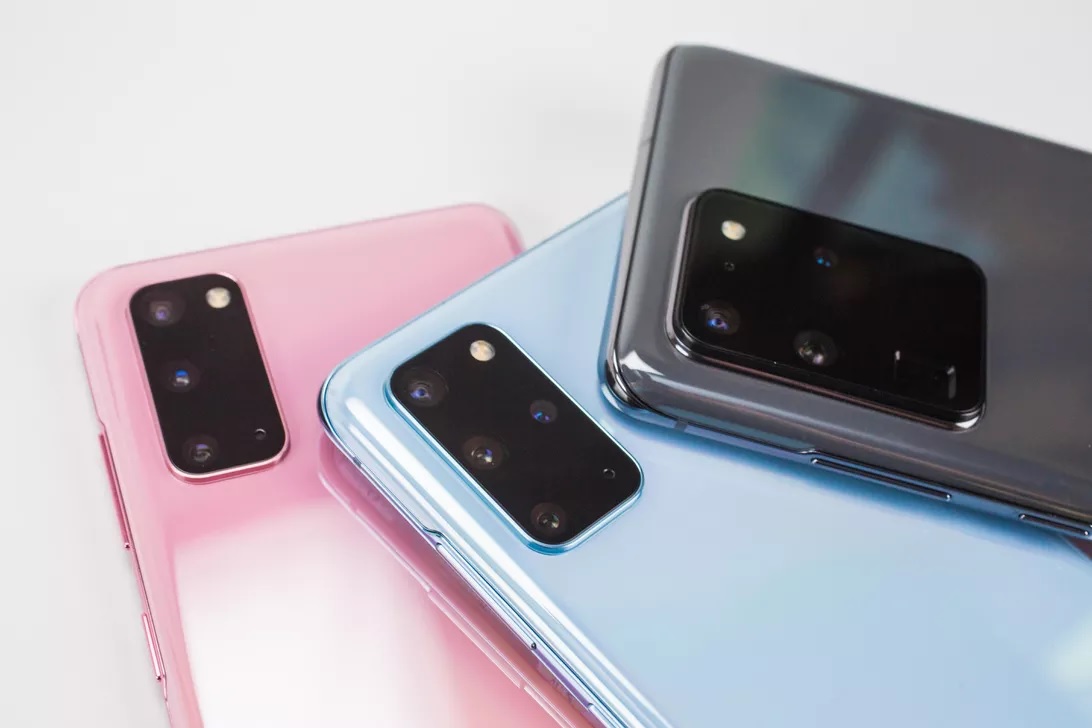RIO DE JANEIRO, BRAZIL – Pledging a new user experience regarding cameras, Samsung released on Wednesday, March 11th, the new Galaxy S20 versions in Brazil. When buying smartphones during pre-sale, which occurs until April 2nd, customers will be awarded a free Galaxy Watch Active2.

The S2 version, available in three colors with 128GB of storage and 8GB of RAM, costs R$5,499 (US$1,200). The S20+, also sold in three colors with 128GB of storage and 8GB of RAM, costs R$5,999.
The two Ultra models feature enhanced specifications, with an option for 12GB E 16GB memory and up to 512GB storage, costing R$7,999 (128GB and 12GB RAM) and R$8,499 for the higher version.
The new devices were equipped with Artificial Intelligence to improve image quality and allow video recording in 8K.
The greatest difference between the models is in the rear cameras. The S20 version is the only one with a triple camera, while the others are equipped with four sensors and provide the DepthVision feature – able to produce the portrait effect.
The set of 108 MP (S20 Ultra) and 64 MP (S20 and S20+) resolution cameras in the main sensors features intelligent solutions such as Space Zoom, a combination of hybrid optical zoom and super-resolution zoom, in a horizontally arranged lens to retain image quality, in conditions of up to 100 times (S20 Ultra) and 30 times (S20 and S20+) proximity to the camera range.
In low-light settings, the nine-binding technology in the S20 Ultra combines nine pixels in one at the sensor level, allowing up to three times the amount of light captured in the images. The new Galaxy S20’s Night Camera mode reduces motion blur at night or in low light with the help of multi-ISO technology.
Another feature present in the three models is the Single Take mode which, when activated, captures up to ten seconds of photos and videos from the same scene, with clippings in different angles and effects, such as timelapse. The Artificial Intelligence features provide a reference for the best images captured with the different cameras.
“We reconstructed the entire camera system with new sensors to act quickly and accurately. The Galaxy S20 combines several images and uses software together with hardware to fuse them into a single high-quality photo, all in a tenth of a second,” explains Renato Citrini, senior product manager for Samsung Brazil’s mobile device division.
Other features
All versions feature expandable memory, fingerprint sensor, Android 10 and the option of using the 5G network, not yet available in Brazil.
The 4000 mAh (S20), 4500 mAh (S20+) and 5000 mAh (S20 Ultra) batteries ensure greater performance throughout the day and are superior to Apple’s latest releases, which in the most powerful version of the iPhone 11, the Pro Max, delivers 3969 mAh (milliAmpere hours).
The Galaxy S20 is protected by the Samsung Knox platform and includes a new processor, called Guardian Chip, for prevention against hardware-based attacks.
The smartphones are equipped with Samsung apps and services, including Bixby – Samsung’s virtual assistant – already available in Portuguese – and Samsung Health, in addition to having integration with other devices in the company’s ecosystem.
In addition to the Galaxy S20 line, Samsung also launched the new version of its headset, the Galaxy Buds+. Available in three color versions (white, black and blue) and with a recommended price of R$999, the headset delivers up to 22 hours of operation (11 hours of uninterrupted music playback, plus 11 hours of charging in the 270 mAh case), without the need for an electric charging station.

Fierce market
The company introduces the evolution of the Galaxy family and the development of a top model for its mainline in a scenario of fierce competition in world smartphone sales. Despite remaining in the lead, Samsung saw Apple and Xiaomi grow in sales in the last quarter of last year, although not enough to take Huawei out of the lead.
In 2019, worldwide smartphone sales fell two percent – the first decline since 2008, according to Gartner consultants. This year’s projections were for growth, but given the advance of the new coronavirus worldwide and the shutdown of several markets such as China and India,, some of them very significant to the industry – both in consumption and production – could dramatically change the scenario.
The increase in demand for the iPhone recorded in the period was driven by the drop in iPhone 11 prices, compared to the iPhone XR, and other price reductions in past generation models. Sales of iPhones grew 39 percent in the fourth quarter in China alone.
Apple also performed strongly in some established and developing markets, such as the United Kingdom, France, Germany, Brazil, and India.
The positive outlook, which was consensual among industry analysts, that worldwide smartphone sales would be boosted by increased demand for 5G phones in general, along with the prospects of the first 5G iPhone, is compromised by the scenario and the possibility of a postponement in the launch of Apple’s new handset.
The company expects temporary shortages of products for iPhone production due to shutdowns at Foxconn’s Chinese factories, according to a statement issued in late February.
Another firm to record growth in the fourth quarter, Xiaomi closed last year selling more than 30 million units, at the same pace it is trying to expand into western markets. China, the main player in the Indian smartphone market, according to Counterpoint, a consultancy specialized in technology, seeks to conquer new audiences by investing in cutting-edge devices, such as the Mi Note 10.
The smartphone features five cameras, two of them telephoto lenses, which allow the exchange of lenses depending on the effect proposed for the photo. Equipped with up to 256GB of internal space and 8GB of RAM, both versions of the model feature 5,260 mAH of gross battery capacity.
Still without a release date in Brazil, the device is sold from R$2,645.00 in marketplaces.
Source: InfoMoney

